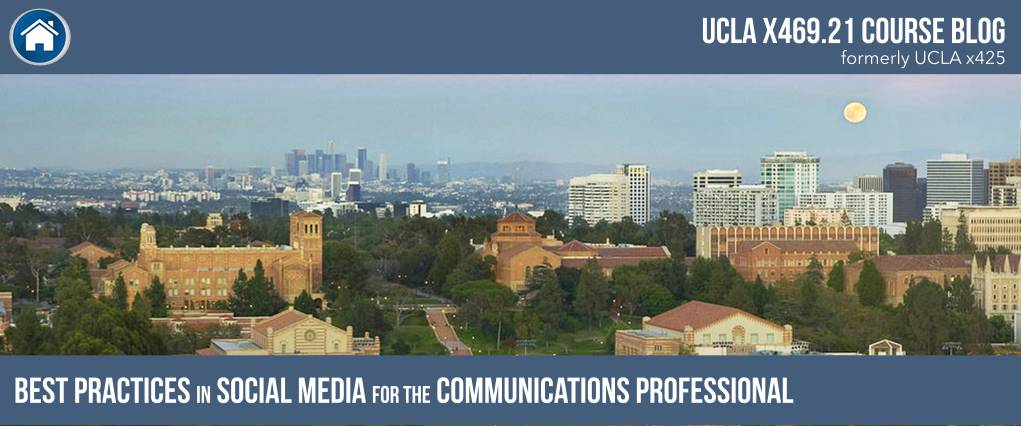
WEEK 3: A Conversation with Guest Speaker Ruben Ochoa by Jasmine Omidfar
By UCLA X469.21 Student Jasmine Omidfar

Jasmine Omidfar
Allison + Partners Director of Digital Ruben Ochoa (@rubenochoa1) spoke with our class about the social media toolkit. I am not particularly good with numbers, but Ruben was able to explain social media analytics in a way that was simple, with real-word examples using Twitter, Facebook, Pinterest, and Instagram.

Ruben Ochoa
I enjoyed his opening example involving a Chinese messaging app that ultimately failed despite an expansive social media marketing campaign. The campaign included a celebrity endorsement by actress/model Shay Mitchell. While she was a great fit for the young target audience, the product itself wasn’t very good, and the product as well as the social media campaign ultimately failed. Ruben used this case study to demonstrate why a company/client shouldn’t engage in social media until it has clear objectives and values, as well as an understanding of its products, industry and competitors
Some key takeaways I learned include:
- The Social Media Analytic Compass is made up of the following components:
- Audience Profile – Target audiences (defined by location, gender, age, etc).
- Audience Size – The number of followers
- Content Analysis – Is your content relevant and engaging?
- Competitive Benchmarking – How competitors are using social media, and what type of results they’re achieving.
- Community Responsiveness – How is the social media effort linked to customer service? (especially important for service industries like tourism)
- Sentiment Analysis – Is the discussion on social media positive, negative or neutral?
- Traffic – Where is the social media buzz being driven (e.g., website, blog, other social media platforms, etc.)
- Reach & Engagement – How many people are seeing the content, and how are they responding (are they liking it, sharing it, commenting, etc.)
- Digital Monitoring – The different tools, beyond native analytics, to track KPIs (Key Performance Indicators) and ROI (Return on Investment) to help guide strategy and avoid crises. Examples include Buffer (free tool) and Sales Force (paid tool).
- Content Management – You don’t need to know all the tools – just focus on a few (like Hootsuite) to help you stay organized.
- Content Creation Using Photo Apps – You don’t need to be a Photoshop wizard to create good images. Ruben uses Snapchat to filter and doodle on pictures.
- Influencer Tools – Tools like Klout and Kred show how much influence a person has online.

